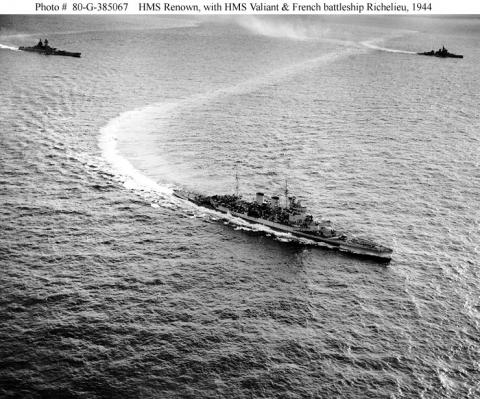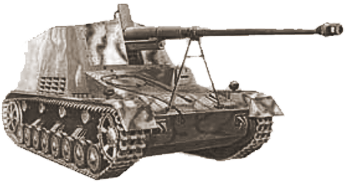The April 1940 German Invasion of Denmark and Norway

Scandinavia took on ample significance to both Germany and Britain late in the winter of 1939-1940. The subsequent events in Scandinavian waters during the spring of 1940 would prove even more strategically significant following France's capitulation in June of 1940. The following will explain why.
Following the outbreak of the Second World War, a politically weakened Neville Chamberlain had brought one of his leading dissenters, Winston Churchill, into his cabinet as First Lord of the Admiralty; in an attempt to silence Churchill's politically damaging critiques of Chamberlain's leadership. Churchill took to the job with his characteristic self-assuredness. Among other things, he was convinced Britain needed to secure Norway's long coastline and ports; thereby increasing the British economic blockade's efficacy against Germany and increasing political pressure on Sweden regarding her trade with Germany.
Germany's intelligence services quickly discovered British intentions regarding Scandinavia. On December 12, 1939 Grand Admiral Raeder took his concerns over British interest in Norway to Hitler and explained the dangers to Germany and its economy if Britain secured Norway. Hitler agreed with Raeder's assessment. In 1940 more than half Germany's iron ore came from imports, with 83% of this total supplied by Sweden. Moreover, during the winter the Norwegian port of Narvik served as the primary loading and shipping point for Swedish iron ore destined for Germany. Given Scandinavia's importance to Germany Hitler ordered the German military to plan for pre-empting the British. For his part, Reader had been looking for a pre-text to maintain the Kreigsmarine's relevance to the German war effort.
When the German supply ship Altmark was seized in Norwegian waters on February 18, 1940 the incident sealed Hitler's conviction regarding his need to act. On March 1, 1940 Hitler issued a Directive describing the plan of attack and rationale behind German plans for invading Norway and Denmark. German General of Infantry von Falkenhorst readied light flexible forces to spearhead an invasion that began early in April.
In spite of the Royal Navy's power, size and Germany's convoluted command, Hitler had split command over the operation giving OKW the central role rather than the army high command (OKH), the German invasion forces quickly found success. Germany took Denmark in a single day; conducting the world's first combat airdrops, a series of landings along the coast and sending a combined arms motorized infantry force driving 300 miles up the Danish peninsula. As for Norway, some 9,000 German troops landed up and down the Norwegian coast in the first wave alone; forcing a hasty British retreat. The British did not give up easily though and instigated sporadic landings in Norway that would last into the summer. Meanwhile the Royal Navy suffered heavy losses in Scandinavian waters including; the aircraft carrier Glorious, two cruisers, seven destroyers, and four submarines. In addition German air and naval assets inflicted heavy damage on several more British cruisers and destroyers. German success in Norway represented a severe blow to allied naval prestige. Two of the world's largest and best-regarded navies, the British and French, had failed to stop the Kriegsmarine from landing troops almost at will up and down the long Norwegian coast.
In spite of what had seemed like an overwhelming Allied disaster the British led efforts in the cold northern European waters provided one enormous strategic benefit for the
British; it virtually guaranteed Germany would, in the short term, not be able to invade Britain. How did this happen? Simply put, the British and Norwegians had decimated the
German surface fleet. The list of German capital ships damaged and put of action indefinitely or lost during the Scandinavian campaign included: the Hipper - damaged in action of April 8th; the Blucher sank by Norwegian shore batteries on April 9th; Karlsruhe - torpedoed by a British submarine on April 9th; the battleship Gneisenau - damaged in a surface engagement with the H.M.S. Renown on April 9th; Konigsberg - capsized and sank after being seriously damaged by Norwegian shore batteries on April 9th and attacked by British aircraft on April 10th; Lutzow - torpedoed by a British submarine on April 11; and the battleship Scharnhorst - damaged in action in June. The number of German destroyers lost or heavily damaged was, almost unbelievably, nearly as appalling a disaster for the German navy.
These losses coupled with the sinking of the German "pocket battleship" Graf Spee in December 1939 represented the German surface fleet's near destruction only eight months into the war. German losses in Scandinavian waters meant any plans seeking to invade the British Home Islands once France fell had to be seriously rethought. Germany could hardly bring Britain to heel simply because the Kriegsmarine was even more hopelessly outmatched in terms of dictating events at sea than it had been in September 1939. By June 1940, the Kriegsmarine only had available 1 heavy cruiser, 2 light cruisers, 4 destroyers, and 19 torpedo boats to guard a motley invasion fleet of transports, civilian barges, and small craft. To make matters worse the Kriegsmarine also suffered from a deficiency in minesweepers; necessary for clearing a path across the English Channel.
The weak and unimposing Kriegsmarine could hardly fight off a British Royal Navy retaining at least 4 battleships, 3 battle cruisers, 3 aircraft carriers, 9 cruisers and 57 destroyers in the British home waters alone on June 10, 1940. Moreover, the imposing British Home fleet cruised England's waters confidently knowing a near equally powerful, easily redeployable British fleet patrolled nearby in the Mediterranean and North Atlantic. What is more, Germany lacked practical experience in large-scale amphibious assaults. It was one thing to land 9,000 German soldiers on relatively weakly defended shores it was quite another to carry 90,000 men across a large body of water in the face of determined resistance. Additionally, it represented a whole another degree of logistical difficulty to maintain a prospective invasion force across the English Channel that would rapidly need to grow if it were to subjugate Great Britain; German logistical efforts, never a strong point to begin with, thus would have faced enormous challenges. This also begs the question regarding from where German
forces could launch. The fighting in Flanders during late May had destroyed or damaged many French ports. What is more, the small craft Germany gathered to cross the Channel lacked the seaworthiness and size needed to maintain adequate reinforcement and supply levels required any German invasion force. Furthermore, the Luftwaffe's elite airborne troops needed time to rest and refit having suffered heavy casualties in the Netherlands and Belgium. In addition, German transport aircraft losses meant the German military lacked airlift capacity needed for seizing and benefiting from capturing British airfields, given likely attrition rates during the process.
Finally, regardless of German experience or airlift capacity, the Wehrmacht lacked a reliable answer to the Royal Navy. Even if the Luftwaffe could control the day, because of German losses in Scandinavian waters the German navy could hardly hope to protect shipping off English invasion beaches at night. Thus, events in Scandinavian waters meant a less than promising German chance to invade England had been reduced to a near hopeless roll of the dice, even assuming the political will had been present to execute the plan. Consequently, Germany would have to look elsewhere if it were to secure its hegemony over Europe.
By Steven D. Mercatante



Post new comment